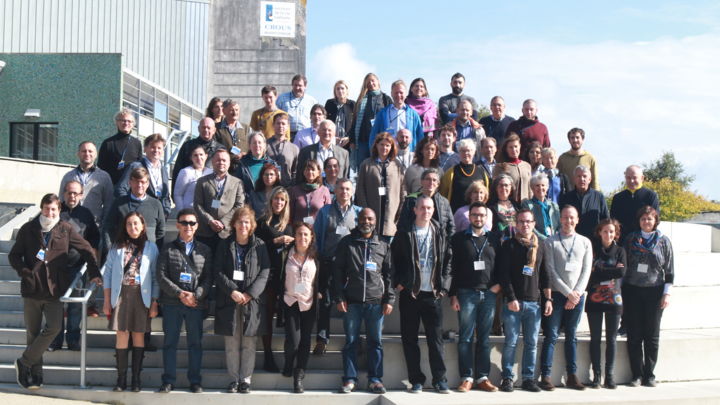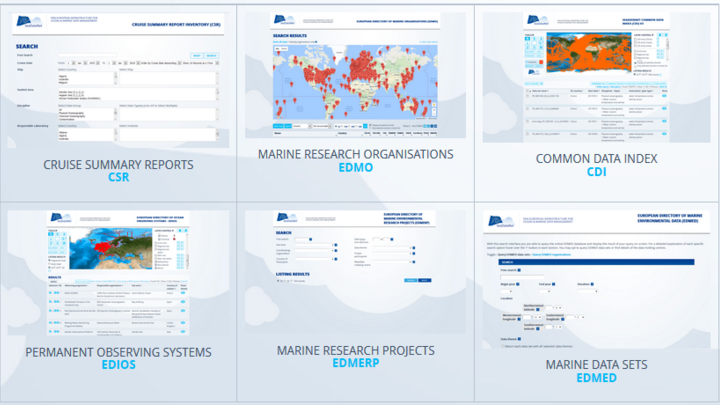
In SeaDataNet, there are two kinds of account:
- Marine-ID account which is used to access the SeaDataNet services open to all users, such as SeaDataNet Data Portal, SeaDataNet Products Catalogue, Request Status Manager (RSM)
- Users can register online
- Users can choose their login and password when registering to Marine-ID (except for partners of SeaDataNet, SeaDataNet 2 and Geo-Seas projects*)
- Users can manage their marine-id account : change their personal information, ask for a new password
- Extranet account which is used for restricted services dedicated to SeaDataNet partners, such as Alfresco workspace and Monitoring Portal.
- Users cannot create their account online, they have to ask for an extranet account to the SeaDataNet Helpdesk
- Users cannot choose their login and password but they can change their password
- Users cannot manage their personal information
*For partners of SeaDataNet, SeaDataNet 2 and Geo-Seas projects: for the sake of simplicity, in 2016, your marine-id account has been created automatically using your Extranet connection parameters (same login, same password). It means that you have now two different accounts (one Marine-Id and one Extranet) with the same login and the same password. Note that if you change (or have changed) your Marine-Id password, the Extranet password will not be changed (or has not changed) and vice versa (so, you can have two different passwords).
Registration is mandatory to download data: users must register once in order to get a personal login-password. Please follow this link to register:
https://www.seadatanet.org/Data-Access/User-registration
and click on "Register as SeaDataNet user".
Please go to the SeaDataNet data portal and click on Search data:
If you just need to browse and have a look to the catalogue content, you do not need to register. On the contrary, if you want to download data or save your data search then you will need to have a marine-id account. see FAQ "Do I need to register?"
(If you do not know how to search data, first have a loo to the How can I get data? FAQ)
First of all a query is limited to a maximum of 10,000 stations. If more stations are needed, it is necessary to follow these steps:
- click the "10000" button on the top of the query result in order to see 10,000 records on one page
- click on the check box on the top left of the list of results (it will check the 10,000 records of the page)
- click on DATASET BASKET (top right of the screen) and order the 10,000 datasets
- go back to the result of your query, click on Next on the top right side to see the next 10,000 records
- repeat steps 2-3
- repeat 4-5
and so on .....
Please feel free to contact us if you have any problem using the SeaDataNet web portal for data downloading.
No, all data are not unrestricted and free for use.
The general case is free and open access for data, around 91% of the data are accessible. Once the user is registered, he can, by default, access all data which are under CC-BY 4.0 licence.
The restricted data (9%) are withheld from general circulation and disclosure but access may be obtained on a case-by-case basis through negotiation.
If you use SeaDataNet data in your publications please include the following in the Acknowledgements:
Data were provided through SeaDataNet Pan-European infrastructure for ocean and marine data management (http://www.seadatanet.org)
Record
A record is an XML metadata document conforming to a named SeaDataNet schema describing a particular type of SeaDataNet data entity.
Dataset
A meaningful collection of measurements. 'Meaningful' can have infinite different meanings that must be constrained through the definition of specific types of dataset used within the SeaDataNet data model. The following dataset types are in use:
Common Data Index (CDI) Dataset
This is the fundamental atomic entity in the SeaDataNet data model and is an aggregation of measurements or observations. It is mapped to real world measurement aggregations in different ways such that the dataset is meaningful for a specific type of data, such as a CTD profile or the time series from a single deployment of a data logger. It is described by a CDI record that is permanently associated in the SeaDataNet architecture with one or more physical data files.
Cruise Dataset
This is the aggregation of CDI datasets from the activity described by a Cruise Summary Report (CSR) record.
Discovery dataset
This is the aggregation of CDI datasets from a discoverable activity described by a European Directory of Marine Environmental Datasets (EDMED) record.
EDIOS Dataset
This is the aggregation of CDI from a monitoring activity described by an EDIOS series record. This is the atomic level of monitoring activity such as a station within a programme.
EDIOS Programme Dataset
This is the aggregation of a set of related EDIOS datasets and is described by an EDIOS programme record. Note that an EDIOS programme dataset may also be considered to be a discoverable activity and additionally described by an EDMED record.
Project Dataset
This is the aggregation of the CDI datasets from an activity described by a European Directory of Marine Environmental Research Projects (EDMERP) record.
Product dataset
This is an aggregation of CDI datasets that provide the input for a SeaDataNet or EMODNET data product, such as a climatology or location time series. The aggregation will be usually be specified in terms of spatio-temporal limits and one or more observable properties (parameters).
Published dataset
This is a CDI aggregation guaranteed free from future change that is citable through a URN such as a Digital Object Identifier (DOI).
GI-Cat dataset
This is the aggregation of CDI data granules having a common data discovery parameter keyword supplied by a single data originator. It is the dataset presented to the GI-Cat brokering service.
SeaDataNet dataset
This is the aggregation of all the CDI datasets in the SeaDataNet system.
Please refer to MIKADO FAQ
Please refer to NEMO FAQ
Please refer to OCTOPUS FAQ





